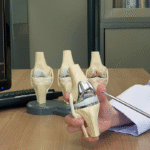
Advanced Orthopedic Surgeries for Knee and Hip Replacement
September 26, 2025
Affordable Pediatric Healthcare Services for Families
September 26, 2025
Back pain and scoliosis are two of the most common spinal issues that affect millions of people worldwide. While occasional back discomfort can result from poor posture, long working hours, or minor injuries, chronic back pain and scoliosis often require specialized orthopedic treatments. Orthopedic care focuses on diagnosing, managing, and treating musculoskeletal problems, including those that affect the spine.
This article explores orthopedic treatments for back pain and scoliosis, explains how they work, and highlights both non-surgical and surgical options.
Understanding Back Pain
Back pain can range from mild soreness to debilitating discomfort that affects daily activities. Orthopedic specialists classify back pain into two main categories:
- Acute back pain – Lasts a few days to weeks, often caused by sudden strain, injury, or improper lifting.
- Chronic back pain – Persists for more than three months and may be linked to underlying conditions such as herniated discs, spinal stenosis, arthritis, or scoliosis.
Orthopedic care aims to address not just the pain but also the root cause to prevent recurrence.
Understanding Scoliosis
Scoliosis is a spinal condition where the backbone curves sideways, often forming an “S” or “C” shape. It can develop during childhood or adolescence, but adults can also experience scoliosis due to degenerative changes. Symptoms may include uneven shoulders, back pain, limited flexibility, and, in severe cases, breathing difficulties.
Orthopedic specialists diagnose scoliosis through physical examinations and imaging tests like X-rays or MRIs. Treatment depends on the severity of the curve, age, and overall health of the patient.
Orthopedic Treatments for Back Pain
Orthopedic doctors use a wide range of treatment approaches for back pain. These can be grouped into non-surgical and surgical options.
1. Non-Surgical Treatments for Back Pain
Most patients start with conservative care, which may include:
- Physical Therapy: Customized exercises strengthen muscles, improve posture, and relieve tension on the spine.
- Medications: Anti-inflammatory drugs, muscle relaxants, and pain relievers are prescribed to reduce discomfort.
- Injections: Corticosteroid or nerve block injections can provide targeted relief for chronic pain.
- Lifestyle Modifications: Orthopedic specialists may suggest weight management, ergonomic chairs, and proper lifting techniques.
- Heat and Cold Therapy: Alternating between ice packs and heating pads helps reduce swelling and relax stiff muscles.
2. Surgical Treatments for Back Pain
When conservative treatments fail, surgery may be considered. Common orthopedic procedures include:
- Discectomy: Removal of a herniated disc pressing on nerves.
- Spinal Fusion: Fusing two or more vertebrae to stabilize the spine.
- Laminectomy: Removing part of the vertebra to relieve pressure on the spinal cord.
Orthopedic Treatments for Scoliosis
Scoliosis treatment depends on the severity of the curve and whether the condition is progressing. Orthopedic specialists offer both non-invasive management and surgical correction.
1. Non-Surgical Treatments for Scoliosis
- Observation: For mild cases, doctors may recommend regular check-ups and X-rays to monitor curve progression.
- Bracing: Specially designed braces help prevent further curvature in growing children and adolescents.
- Physical Therapy: Strengthening exercises improve posture, core stability, and spinal alignment.
- Pain Management: Anti-inflammatory medications and targeted exercises help reduce discomfort.
2. Surgical Treatments for Scoliosis
In severe cases, surgery may be required to correct the curve and stabilize the spine:
- Spinal Fusion Surgery: The most common scoliosis procedure, where rods, screws, and bone grafts are used to align and fuse the spine.
- Vertebral Body Tethering (VBT): A less invasive surgery for younger patients that allows for continued spinal growth.
- Advanced Minimally Invasive Techniques: These methods reduce recovery time and scarring compared to traditional open surgeries.
Comparing Orthopedic Treatments for Back Pain and Scoliosis
| Treatment Type | Back Pain | Scoliosis |
|---|---|---|
| Physical Therapy | Strengthens back muscles, improves mobility | Improves posture, supports spinal alignment |
| Bracing | Rarely used, except for fractures | Common in children/adolescents to prevent worsening curves |
| Medications | Pain relief and inflammation control | Helps with discomfort but does not stop curve progression |
| Surgery | Discectomy, spinal fusion, laminectomy | Spinal fusion, vertebral tethering |
This comparison shows that while some treatments overlap, scoliosis often requires more structural correction compared to back pain management.
The Role of Orthopedic Specialists
Orthopedic doctors play a vital role in treating both back pain and scoliosis. They use advanced imaging tools to diagnose problems accurately and create personalized treatment plans. Their goal is to reduce pain, improve mobility, and enhance quality of life.
In many cases, orthopedic care also involves collaboration with physical therapists, pain management specialists, and surgeons to ensure comprehensive treatment.
Lifestyle Tips to Support Orthopedic Treatment
Orthopedic treatments work best when combined with healthy lifestyle habits. Patients can support their spine health by:
- Maintaining a healthy weight to reduce stress on the back.
- Practicing good posture while sitting, standing, and sleeping.
- Engaging in low-impact exercises like swimming, yoga, or walking.
- Avoiding prolonged sitting or heavy lifting without proper technique.
- Using ergonomic chairs, mattresses, and supportive footwear.
These habits not only improve recovery but also help prevent future spinal problems.
Conclusion
Back pain and scoliosis can disrupt daily life, but modern orthopedic treatments provide effective solutions ranging from non-surgical therapies to advanced surgeries. Whether it’s physical therapy, bracing, or spinal fusion, the right treatment depends on the severity of the condition and the patient’s needs. With proper care, lifestyle changes, and expert guidance from orthopedic specialists, patients can achieve long-term relief and improved quality of life.
FAQs About Orthopedic Treatments for Back Pain and Scoliosis
1. Can scoliosis be treated without surgery?
Yes, mild scoliosis can often be managed with bracing, physical therapy, and regular monitoring. Surgery is typically reserved for severe or worsening cases.
2. What is the recovery time for spinal fusion surgery?
Recovery usually takes several months. Patients may need physical therapy to regain strength and flexibility. Most people can return to normal activities within 6–12 months.
3. Are orthopedic treatments for back pain safe?
Yes, most treatments like physical therapy, injections, and medications are safe when prescribed by specialists. Surgical risks exist but are minimized with advanced techniques.
4. Can adults benefit from scoliosis treatment?
Absolutely. While bracing is more effective in children, adults can benefit from physical therapy, pain management, and in some cases, corrective surgery.
5. How do I know if I should see an orthopedic specialist for back pain?
You should consult an orthopedic doctor if your back pain lasts more than a few weeks, interferes with daily activities, or is accompanied by symptoms like numbness, weakness, or spine deformity.

